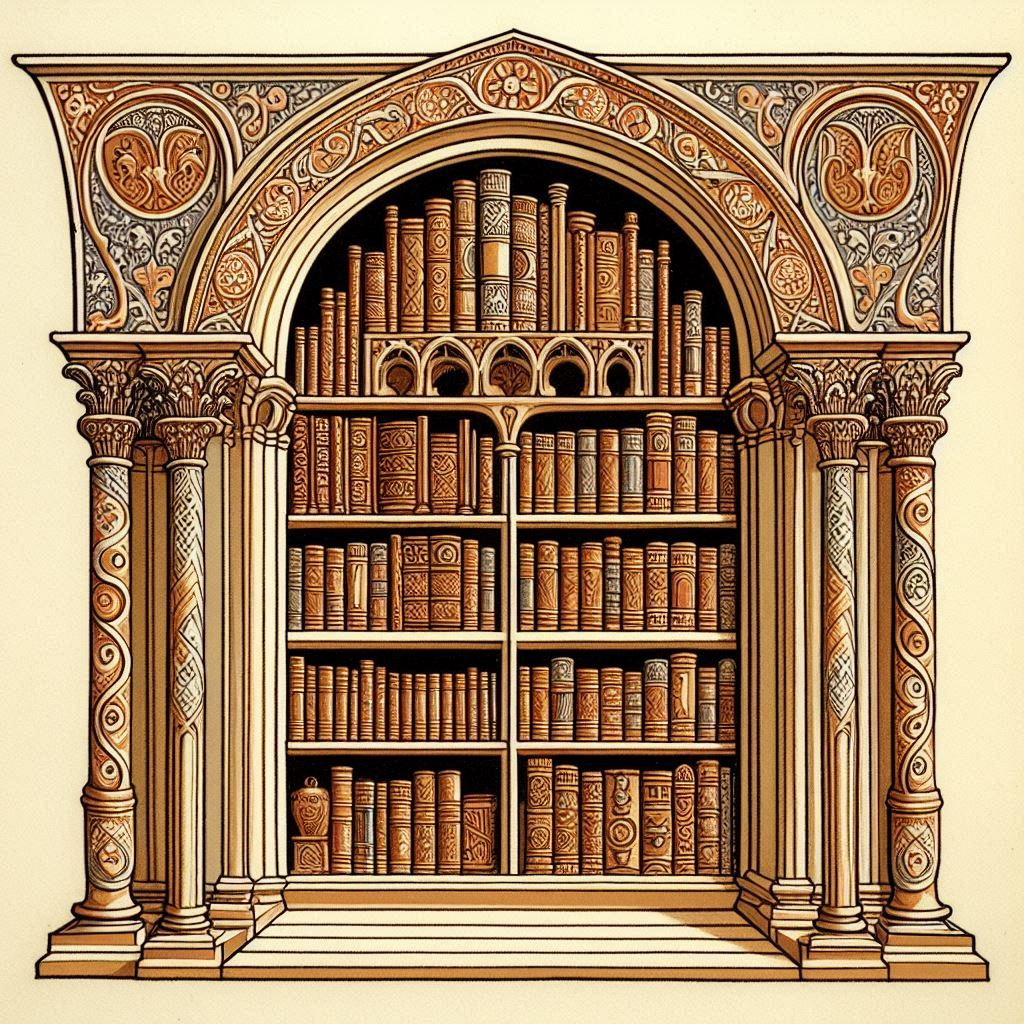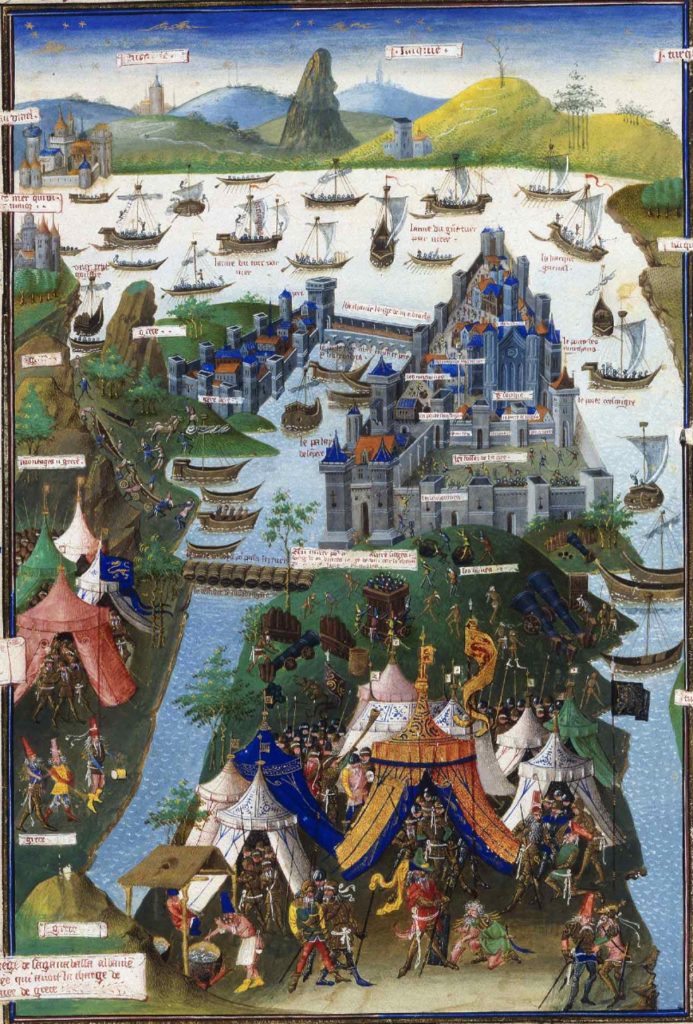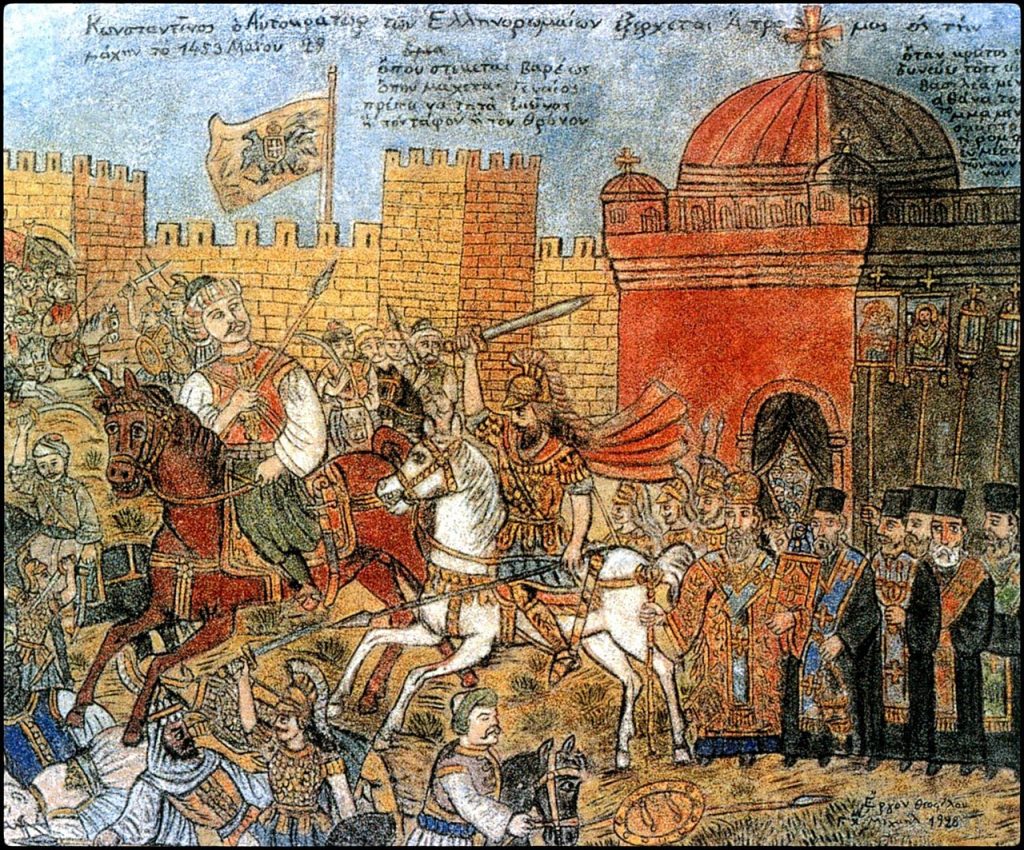
The 1453 fall of Constantinople was not only the fall of the Byzantine Empire but also one of the biggest intellectual and cultural losses in all of human history. When the Ottoman Empire, led by Sultan Mehmed II, breached the walls of this city, one of ancient times’ greatest collections of knowledge fell with it: the Imperial Library of Constantinople. But what had been destroyed in the apocalypse? What was lost when East Rome’s capital had fallen?
A Legacy of Knowledge Before the Fall of Constantinople
To understand the extent of loss when Constantinople was conquered, one must grasp what the city represented. In the year 330 AD, Emperor Constantine had made Constantinople the “New Rome.” It became an early center of Christian doctrine, Roman scholarship, and administrative governance. Over the centuries that ensued, it contained a vast repository of manuscripts from Greece, Rome, Egypt, and the broader ancient world.
The Imperial Library of Constantinople was more than just a collection of scrolls and codices. It stood for continuity—connecting the classical world with medieval Christian Europe. Although often eclipsed by the legendary Library of Alexandria, Constantinople’s archive may have done even greater work toward preventing things from being lost in the West.
By the 5th century AD, the library held tens of thousands of volumes: Homeric epics, Platonic dialogues, Aristotelian works, Galenic medical writings, Ptolemaic astronomical observations, and much more besides. It also held early Christian writings and theological commentaries that constituted Eastern Orthodox doctrine.

The Long Decline Before the Fall of Constantinople
Ironically, knowledge loss began much sooner than the fall of Constantinople. Fires, abandonment, and religious persecution were underway already by the 10th century. The Fourth Crusade of 1204 was particularly disastrous. Latin crusaders, rather than safeguarding Christendom, sacked the city. Many rare manuscripts were looted or destroyed. Valuable books were melted for gold bindings or confiscated and taken off to Venice, Paris, and elsewhere.
Nevertheless, even in decline, Constantinople was a light. Byzantine intellectuals labored assiduously to copy ancient books. The Palaiologos dynasty (1261–1453), despite a dying empire, oversaw a final flowering of intellectual activity known as the Palaiologan Renaissance. Scholars such as Maximus Planudes and Theodore Metochites preserved much of the classical literature through dedicated copying.
What Was Lost During the Fall of Constantinople?
When the Ottoman forces eventually broke into the Theodosian Walls on 29 May 1453, the mayhem that ensued was catastrophic. Churches were robbed. Homes were razed. And libraries—public, private, monastic—were pillaged or torched. Surviving manuscripts from the Imperial Library were destroyed, lost in the flames, or scattered across the Islamic world and Europe.
We may never know the full list of what was lost at Constantinople’s fall. But specialists are certain that thousands of irreplaceable manuscripts were lost—many of which were the only ones in existence. Among the losses potentially suffered were:
Lost drama of Euripides, Sophocles, and Aeschylus.
Missing books of Livy’s Ab Urbe Condita.
Work by pre-Socratic philosophers such as Anaximander and Heraclitus.
Anonymous commentaries on ancient mathematics, science, and medicine.
Early Christian books and local theological debate never recorded anywhere else.
Intellectual shock at such loss cannot be overstated. Knowledge that had endured earthquakes, barbarian raids, and centuries of war was now lost through conquest.
The Silver Lining After the Fall of Constantinople
But from the ashes, new hope arose. Refugee scholars moved westward, bringing with them whatever books were available. Their presence in Italian city-states helped trigger the Renaissance—a rebirth of learning that would change Europe. Men like Cardinal Bessarion and George of Trebizond translated Greek manuscripts into Latin, reintroducing Plato, Aristotle, and Galen to a Western world that had forgotten them for centuries.
Thus ironically, the fall of Constantinople became a stimulus for revivification. While the East lost its repository of classical scholarship, the West began its journey into the modern era.

